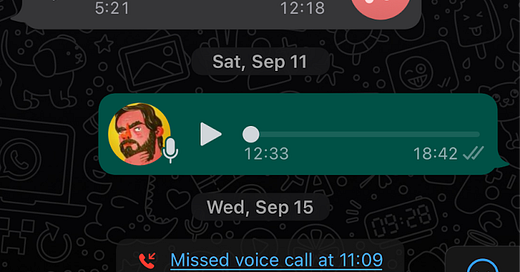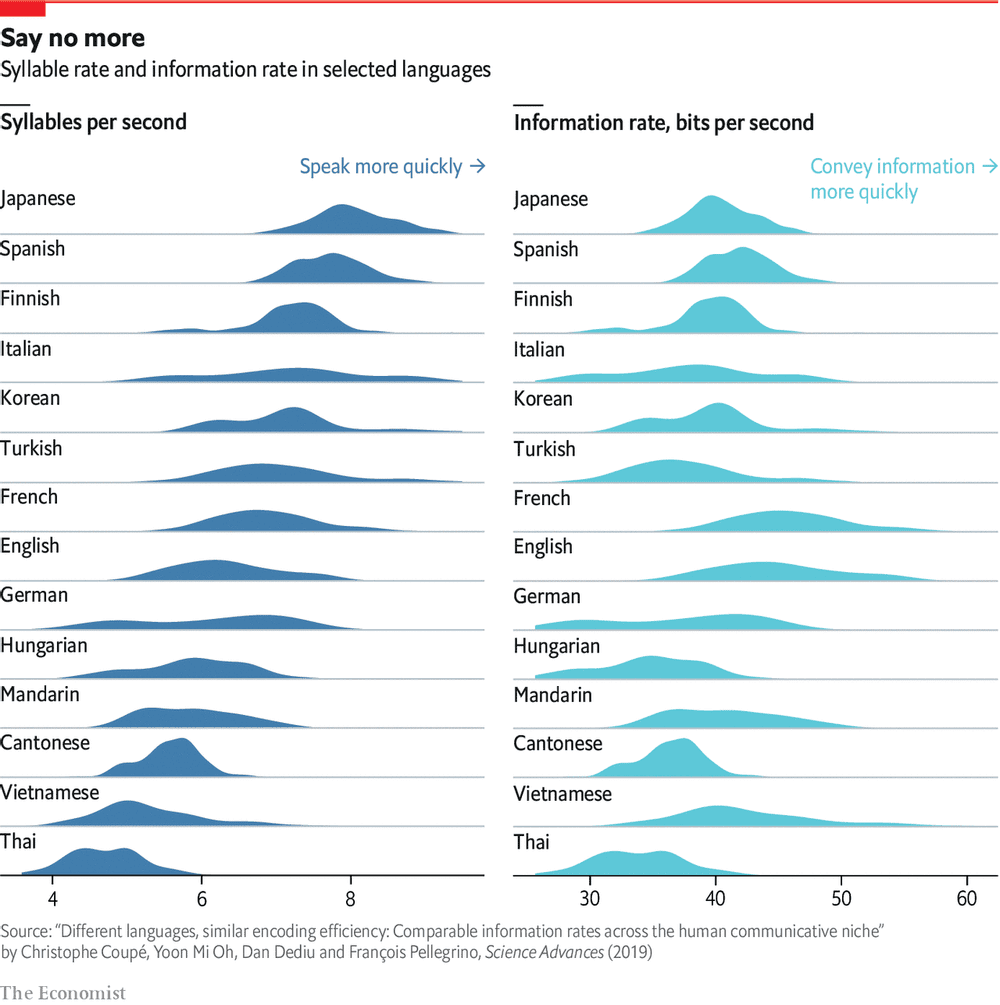Re-running a WITI classic today. Have a great weekend. -CJN
Kevin Maguire (KM) has spent 20 years in brand strategy, including almost 10 years at Google. He now helps brands build better things faster at Quickhatch, as well as running The New Fatherhood, a weekly newsletter exploring the changing nature of what it means to be a dad today. Kevin previously wrote about leadership issues at FC Barcelona.
Kevin here. The pandemic has changed how we communicate at work. Maybe forever. We're working from anywhere. We're joining meetings in virtual reality. Some are making “mouse jigglers” to trick their managers into thinking they’re available to chat when they’re afk. And if Zuckerberg has his way we’ll be floating around in a legless dystopia before you can say “the torment nexus is here.”
But, for me, the biggest changes in how I connect have been more personal. We’ve thankfully left Zoom Happy Hours and Trivia Nights in 2020—where they belong—and we’re using scientifically verified ways to deal with video call fatigue, like shutting off our cameras. The ideal “video call without a camera” has always been there: the humble phone call. And it’s been making a comeback as the best way to check in.
Why is this interesting?
The trouble with phone calls, of course, is that two people both have to be available at the same time. And whilst scheduling a timeslot to talk can solve this, that can be at best impersonal and at worst impractical—especially across continents.
Enter the voice message (not to be confused with the voicemail). Mashable called it"the single most underrated and misunderstood mode of digital communication that Americans are missing out on." These messages have successfully created a third place in communication: the warmth of a phone call with the convenience of a text message. Voice messages allow us to express as many as 24 different emotions, so it's no wonder dating apps have leapt onto the trend, with often hilarious results.
Whilst America might not have caught on (yet), voice messages are part of the fabric of life in Spanish-speaking countries. It’s strange to go a day without seeing someone recording one: walking through the street, sitting on a bus, waiting on a terraza—all talking into the bottom of their handsets, face-to-face with the display, the top of the phone tilted away towards the horizon. Speaking to the phone, not with it.
Why are voice messages so prevalent here? Well, for non-native speakers, listening to Spanish can feel like grasping for a raft in a storm—after Japanese, it's the second-fastest spoken language, with an average of 7.8 syllables per second (English moves at a relatively leisurely 6.2). When compounded with the common usage of accents and special characters (like the ñ) in the language, typing ends up significantly slower than speaking.
(Caption: Image via The Economist, who made the data more legible than the original study.)
Voice messages bring all the clarity and emotion of a phone call, and none of the imposition. You send them asynchronously, volleying back and forth in a low-stakes rally, a way to create an ambient sense of intimacy between close friends and family, who—due to travel restrictions—you may not have seen in almost two years. Often short, sometimes long—I was walking and talking recently and realised I'd hit the 10 minute mark, and apologised profusely to the friend I was sending it to—but it doesn't matter, because there's no timetable on a reply. Voice messages don’t interrupt, or demand to be answered. They don’t get despondent after being left on read. They just are.
A snapshot of a back and forth between myself and a friend, a mish-mash of short messages, voice messages, and missed phonecalls. Yes, that is a 12 minute voice message.
The rise of the voice message has been accelerated by another piece of omnipresent technology: Airpods. It's no longer necessary to pace around talking into your phone—simply press record, put your phone in your pocket, and walk and talk. They’re the polar opposite of audio-based platforms like Clubhouse and Twitter Spaces and Discord. Rather than many-to-many audio, it's incredibly targeted, private, a one-to-one experience. You’re free to wander the streets with the voice of your friend in your ear, like listening to a short podcast, recorded for an audience of one. (KM)
Quick Links:
A few negatives about voice messages that should be noted. First is that the experience still kinda sucks: do I lift it up to my ear to listen? Do I have to click then lift it? Why did my phone screen lock halfway through and it stopped? These suggested UX fixes would make a great start. (KM)
The voice memo can also be incorporated into the writing process, a quicker way to get to what Anne Lamott called “The Shitty First Draft.” Talk to a friend about something interesting, import it into Otter.ai, and when you get back to my desk it’ll be there, ready to edit. It seems like I’m not the only one hacking them in this way. (KM)
What about if you don’t want to listen to the message? Well, Whatsapp have you covered—they’re working on transcriptions inside the app, for those of us stubbornly holding onto the written word (KM)
This essay should in no way be considered a vote for voice mail. HBR was sounding their death knell back in 2013, and they continue to be clunky and cantankerous. (KM)
—
WITI x McKinsey:
An ongoing partnership where we highlight interesting McKinsey research, writing, and data.
Using anxiety to your advantage. How can we reclaim our relationship with anxiety, so it works for us, not against us? A healthy outlook on anxiety means viewing it as a part of being human, not as a problem to solve, says Dr. Tracy Dennis-Tiwary in a new interview about how you can make anxiety your ally.
—
Thanks for reading,
Noah (NRB) & Colin (CJN)
—
Why is this interesting? is a daily email from Noah Brier & Colin Nagy (and friends!) about interesting things. If you’ve enjoyed this edition, please consider forwarding it to a friend. If you’re reading it for the first time, consider subscribing (it’s free!).







Great overview! My other favorite trick is transcription on Google Pixel phones. It is so fast it feels like it reading my mind. https://twitter.com/jamescham/status/1265512829806927873?lang=en